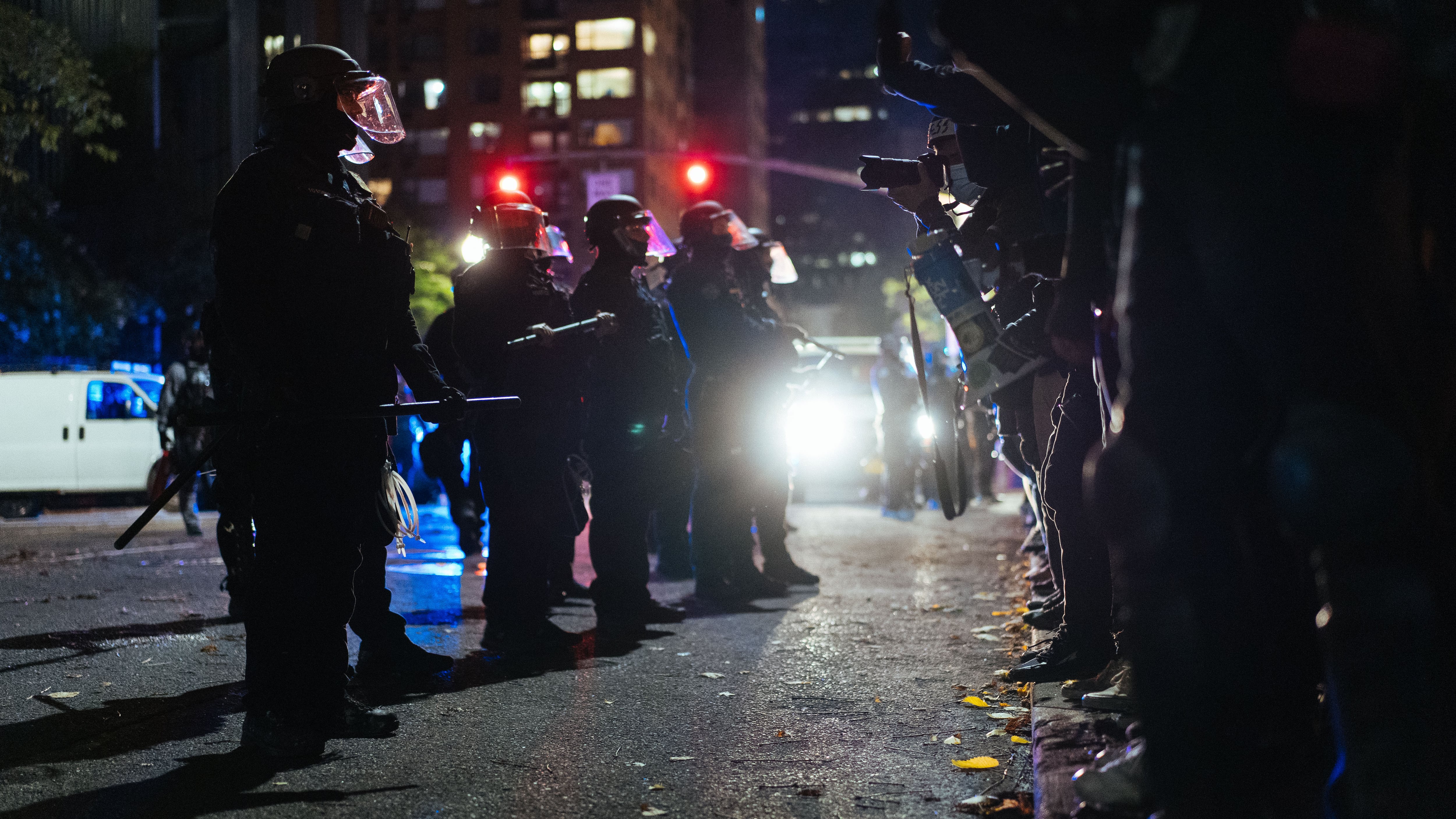A Portland police officer is under investigation by Independent Police Review for allegedly striking a Black homeowner who complained about tear gas seeping into his house. As WW previously reported, Elijah Warren, who was hit in the back of the head with a baton Sept. 6, didn't know the name of the officer, just the number on his helmet: 67.
That number is unpleasantly familiar to people who attend Portland protests.
Three people—two journalists and an activist—gave WW detailed accounts of incidents of force committed by an officer wearing helmet number 67.
After four months of nightly confrontations with police, protesters say they can recognize and rank how violent each officer is by their faces and helmet numbers—but not by their names. Portland Police Bureau officers were given permission to cover the name plates on their badges to avoid doxxing—the sharing of their names, addresses and other personal information on social media—but police watchdogs say the practice has resulted in less accountability.
Several witnesses tell WW one officer stands out: He wears a helmet marked 67 with blue tape. Videos of him have circulated on social media for weeks. Several show the officer shoving protesters to the ground.
"We all know the numbers of the guys who are the worst," says Laura Jedeed, an independent journalist covering protests, "and [67] is one of the numbers you hear."
The Police Bureau says it cannot identify an officer based solely on a helmet number. Mayor Ted Wheeler won't comment on an open investigation and says that releasing the officer's identity would compromise the integrity of the investigation. Wheeler's spokesman Jim Middaugh says he doesn't know if 67 is still patrolling protests. "We take it seriously and we're evaluating what the appropriate duty status for that officer should be based on the allegations that have been made," Middaugh says.
Here is how the three people describe their encounters with 67.
June 30
North Lombard Street
Lesley McLam, an independent journalist, says 67 has shoved her to the ground on two separate occasions. The first was June 4 at a downtown protest. She says he chased her and knocked her to the pavement on Southwest 3rd Avenue. On a second night, June 30, she was filming a protest at the headquarters of the Portland Police Association on North Lombard Street. She says officer 67 shoved her to the ground so hard it left a bruise and her legs still ache.
McLam says she is now is reluctant to film protests up close. "I back off even if I know I've done nothing wrong." She can't understand why 67 is allowed to remain on street duty.
"If this was any other corporation or company, the lawyers would not allow that salesperson back on the sales floor," McLam says. "How can our government allow this officer to go back out to enforce something if their enforcement ability is in question?"
Sept. 26
Southwest 6th Avenue and Yamhill Street
Tealeanna Lindseth says she was following a police order to walk away from the Multnomah County Justice Center in downtown Portland when officer 67 repeatedly shoved her. He pushed her hard enough that she fell into an intersection, she says.
"My entire body smacked the ground so hard," Lindseth says.
Lindseth, 22, was shoved again by him soon after, she says—and this time, she ran into a potted plant, shattering the phone that was in her pocket and bruising her right thigh.
Lindseth is an active protester, a Portland activist and a Black woman. She says she is repeatedly targeted by officers, especially 67. "None of them are getting held accountable, and it's wrong," she says, "If someone messes up, they need to all be checked again."
Sept. 23, 2020
Southwest Salmon Street and Broadway
Melissa Lewis, an independent videographer, has been filming protests on a nightly basis since May. On the night of Sept. 23, tensions between protesters and police were especially high. It was the same day a Kentucky grand jury decided not to charge officers with the murder of a Black woman, Breonna Taylor. That night, a protester threw a Molotov cocktail into police ranks.
Lewis, 30, had been on the front lines trying to capture video of protesters arguing with officers. She says the officer with helmet number 67 started yelling at the person beside her—then turned to her and shoved her to the sidewalk, over a curb. She twisted her ankle.
"I felt it pop. It was so vicious," Lewis says. "This was the first time I cried on camera. I couldn't hold it together that I was scared."
Lewis, who already had three surgeries on that ankle, now wears an ankle brace to report on protests. Officers like 67, she says, "are the people that you follow with the camera because you know they are going to do something."

